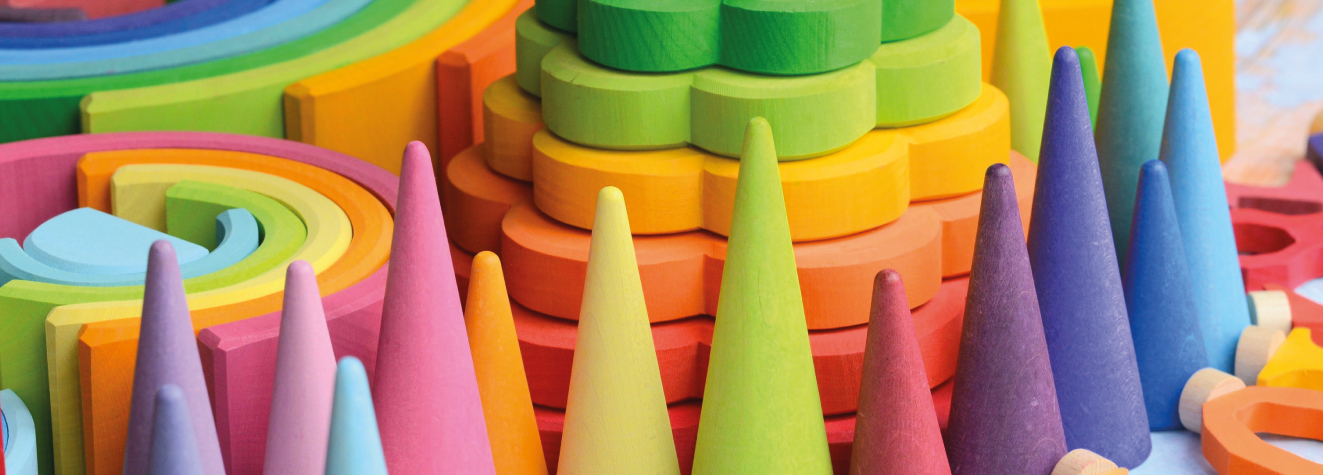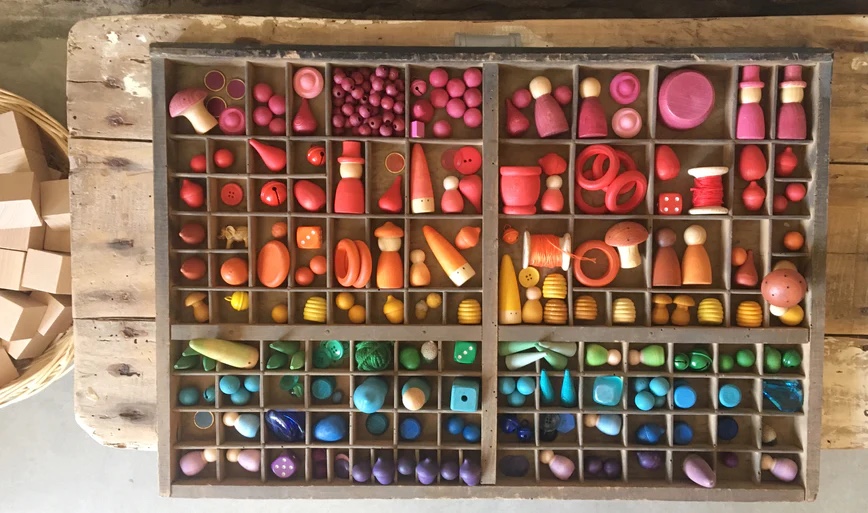
Imagine a world full of possibilities; one where a cardboard box becomes a spaceship, castle or train and you can create a new land with monsters, goblins and fairies just by opening up the toy cupboard. How magical!
Imaginative play isn’t just fun, it helps children make sense of the world, their emotions and relationships. It also helps their language, creativity and problem solving skills. Read more about the benefits of Role Play.
The key thing to remember when choosing toys to build up a collection is that it’s important for toys to be ‘open-ended’. This means that they can be used for lots of different things; whatever suits your child at that time, and it means the toys’ potential grows with your child.
Here are a few categories of toys to kit out any playroom or corner, ideal to stimulate kids’ imaginations:
Small World
Manipulating tiny figures helps children feel in control. If the figures aren’t defined, they can be any gender, any character, old or young, which opens up story making possibilities. Ostheimer carved wooden figures are tactile and an ideal size to hold for children. Also, tiny Grapat sticks, wizards and nins are a brilliant addition to any small world box as they have so many uses. They can also help with sorting and colour coding – all part of the fun!
Dressing Up
Raid your grandmother’s wardrobe or the local charity shop, then find a big basket and fill with a range of clothes, shoes, hats and accessories. Watch your child transform themselves as they try things on. Add a selection of play scarves, crowns and fairy wands and you set the stage for this year’s big family production.
Dens & Cosy Spaces
Not only are play scarves and silks the heroes of the dressing up basket for their versatility, they can also create a den by being hung up in a corner of the room or under a tree. Dens give kids their own space for reading, thinking and playing. They are also an ideal place to snuggle down with you to chat or share a book.
Block Play
Constructing cities, towers, villages and vehicles out of blocks helps dexterity as well as imaginations. Invest in a set of wooden blocks (coloured and natural) and add different sizes and types of blocks, such as empty food packets and boxes. Remember to create a space for block play where siblings can’t easily knock down carefully constructed creations. Add small world figures for a deeper dimension to the play possibilities.

